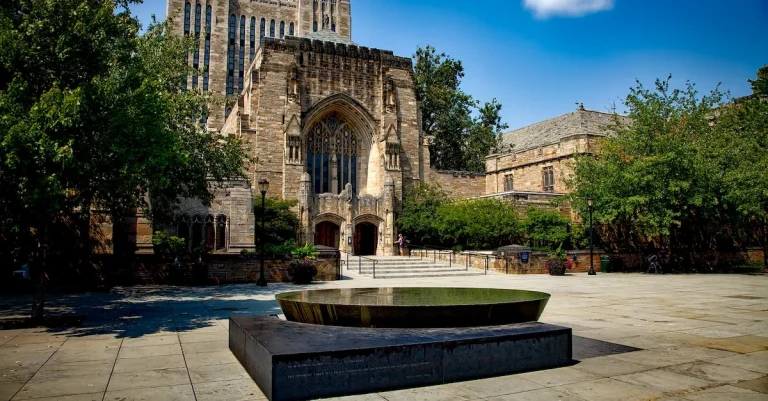The Real Cost Of Living In Northern California
With its towering redwoods, picturesque coastal towns, and proximity to San Francisco and Silicon Valley, Northern California is a desirable place to call home. But its beauty and job opportunities come at a steep price.
If you’re short on time, here’s a quick answer: The cost of living in Northern California is among the highest in the U.S., especially for housing, utilities, and transportation. Expect to pay a premium to enjoy the region’s moderate climate and abundance of natural beauty.
This in-depth guide will break down the major costs you can expect to incur by living in Northern California. We’ll look at housing, food, transportation, healthcare, and more. Whether you’re thinking of relocating or just curious, read on to learn what it really takes to make ends meet in this high-cost region.
Housing Costs
Living in Northern California comes with its fair share of expenses, and one of the most significant costs is housing. The high demand for housing in this region, coupled with limited supply, has resulted in skyrocketing prices.
Rental Prices
Renting a home in Northern California can be quite expensive. According to recent data from RentCafe, the average rent for a one-bedroom apartment in San Francisco is around $3,500 per month. In popular areas such as Silicon Valley, the prices can be even higher, with some rentals reaching $4,000 or more.
The high rental prices can be attributed to several factors. The booming tech industry, which attracts many high-income professionals, has increased the demand for housing. Additionally, the limited availability of land for new construction has contributed to the scarcity of rental properties.
Mortgages and Home Prices
If you’re considering buying a home in Northern California, be prepared to face steep prices. The median home price in San Francisco is well above the national average, currently sitting at over $1.3 million.
In other desirable areas like Palo Alto and Marin County, prices can easily exceed $2 million.
One reason for the high home prices is the strong job market and high salaries in the region. Many professionals working in the tech industry can afford to pay a premium for housing, driving up prices. Additionally, the limited land available for development puts further pressure on home prices.
Securing a mortgage for a home in Northern California can also be challenging. Lenders often require higher down payments and have stricter lending criteria due to the high prices and potential risks associated with the volatile housing market in the area.
It’s important to note that while the cost of living in Northern California can be high, residents often enjoy a high quality of life and access to numerous amenities and cultural attractions. However, it’s crucial to consider your financial situation and carefully weigh the costs before making the decision to move to this region.
Transportation
When it comes to the cost of living in Northern California, transportation expenses can be a significant factor. Whether you own a car or rely on public transportation, there are various costs to consider.
Gas Prices
One of the biggest expenses related to transportation in Northern California is the cost of gas. Gas prices in the area tend to be higher compared to the national average. According to the U.S. Energy Information Administration, the average price of regular unleaded gasoline in California is often among the highest in the country.
This can have a significant impact on your monthly budget, especially if you have a long commute or frequently travel long distances.
Vehicle Maintenance
In addition to gas prices, vehicle maintenance is another expense to consider. Northern California’s diverse terrain and weather conditions can take a toll on your vehicle. Regular maintenance, such as oil changes, tire rotations, and brake inspections, is essential to keep your vehicle in good condition.
These costs can add up over time, so it’s important to budget accordingly.
Public Transportation
Public transportation is a viable alternative to owning a car in Northern California. Cities like San Francisco have well-developed public transportation systems, including buses, trains, and light rail.
While public transportation can be a more cost-effective option, it may not be as convenient or accessible in more rural areas. It’s important to consider your specific location and transportation needs when deciding whether to rely on public transportation.
Food and Groceries
When it comes to the cost of living in Northern California, one of the major expenses that residents face is food and groceries. Whether you’re shopping for groceries or dining out, the prices in this region can be quite high compared to other parts of the country.
Grocery Costs
Grocery shopping in Northern California can be a bit of a shock to the wallet. The prices for basic necessities like bread, milk, and eggs tend to be higher than the national average. Additionally, fresh produce and organic products often come with a premium price tag.
According to recent statistics, the average cost of groceries for a family of four in Northern California can range from $800 to $1,200 per month. However, it’s worth mentioning that prices may vary depending on the specific location within the region.
If you’re looking to save money on groceries, it’s a good idea to shop at discount supermarkets or farmers’ markets. These options often offer more affordable prices for fresh produce and other food items. Planning meals in advance and buying in bulk can also help you cut down on costs.
Dining Out
While dining out can be a great way to enjoy the diverse culinary scene in Northern California, it can also be an expensive endeavor. Restaurants in this region often have higher menu prices compared to other parts of the country.
For example, a meal for two at a mid-range restaurant can cost anywhere from $50 to $100, excluding drinks and tip.
However, it’s important to note that the quality and variety of dining options in Northern California are hard to beat. From world-class restaurants to food trucks and street vendors, you can find a wide range of cuisines and flavors to suit every taste bud and budget.
Exploring local food festivals and trying out new eateries can be a fun way to experience the culinary delights of the region without breaking the bank.
Utilities
When it comes to the cost of living in Northern California, one of the key factors to consider is the cost of utilities. From electricity to heating and cooling, and even water, these expenses can add up quickly. Here’s a breakdown of what you can expect to pay for utilities in this region.
Electricity
Electricity bills in Northern California can be quite high due to the region’s hot summers and the need for air conditioning. According to the U.S. Energy Information Administration, the average residential electricity rate in California is around 18.31 cents per kilowatt-hour (kWh), which is higher than the national average.
This means that homeowners and renters alike can expect to see a significant portion of their monthly budget go towards electricity bills.
However, there are steps you can take to lower your electricity costs. Investing in energy-efficient appliances, using smart thermostats, and practicing energy-saving habits can help reduce your electricity consumption and save you money in the long run.
Heating and Cooling
Heating and cooling costs in Northern California can vary depending on the type of system you have and the size of your home. The region experiences mild winters, but summers can be scorching. As a result, many households rely on air conditioning to stay comfortable during the hotter months.
The cost of heating and cooling can be significant, especially if you have an older or inefficient system. Regular maintenance, insulation, and programmable thermostats can help improve energy efficiency and reduce your heating and cooling expenses.
It’s also worth exploring alternative options such as solar panels, which can help offset some of these costs in the long run.
Water
Water rates in Northern California can vary depending on the specific city or county you reside in. According to the California Public Utilities Commission, the average water bill for a residential customer in California is around $50 per month.
However, rates can be higher in areas that experience water scarcity or have implemented conservation measures.
Conserving water is not only environmentally friendly but can also help lower your monthly water bill. Simple steps like fixing leaks, using low-flow fixtures, and practicing water-saving habits can make a significant difference in your overall expenses.
It’s important to note that these utility costs are just one aspect of the overall cost of living in Northern California. Other factors such as housing, transportation, and groceries also contribute to the region’s high cost of living.
Understanding and budgeting for these expenses can help individuals and families make informed decisions about their financial well-being in this region.
Healthcare
When it comes to the cost of living in Northern California, healthcare is a significant factor to consider. The region is known for having some of the highest healthcare costs in the country, making it important for residents to understand the expenses associated with medical care.
Insurance Premiums
One of the primary costs associated with healthcare in Northern California is insurance premiums. The cost of health insurance can vary significantly depending on various factors such as age, health status, and coverage options.
According to a report by the California HealthCare Foundation, the average monthly premium for an individual in the state is around $574, while a family plan can cost up to $1,634 per month.
It is important to note that these figures are just averages, and the actual cost of insurance premiums can be higher or lower depending on individual circumstances. It is always a good idea to shop around and compare different insurance plans to find the best coverage at the most affordable price.
Out-of-Pocket Costs
In addition to insurance premiums, residents of Northern California also need to consider out-of-pocket costs when it comes to healthcare. These costs include deductibles, copayments, and coinsurance, which can add up quickly, especially for individuals with chronic health conditions or those requiring specialized treatments.
According to a study by the Kaiser Family Foundation, the average deductible for employer-sponsored health plans in California is $1,573 for individuals and $3,293 for families. This means that individuals and families are responsible for paying these amounts out of their own pockets before their insurance coverage kicks in.
It is essential for residents to carefully review their insurance policies and understand the out-of-pocket costs associated with their coverage. This can help individuals and families plan their healthcare expenses and budget accordingly.
Furthermore, it is advisable to take advantage of preventive care services, such as annual check-ups and screenings, to catch any potential health issues early on and avoid more significant medical expenses in the long run.
For more information on healthcare costs and insurance options in Northern California, you can visit the Covered California website, which provides resources and assistance for individuals and families seeking affordable healthcare coverage.
Conclusion
The cost of living in Northern California is steep across the board. Housing, food, gas, utilities, and healthcare all cost well above national averages. For many, the high costs are worth it to enjoy the region’s natural beauty and job opportunities.
By budgeting wisely, looking for deals, and cutting back on discretionary spending, you can make living in Northern California more affordable. But you should be prepared for a high cost of living, especially in the Bay Area and around Sacramento.








